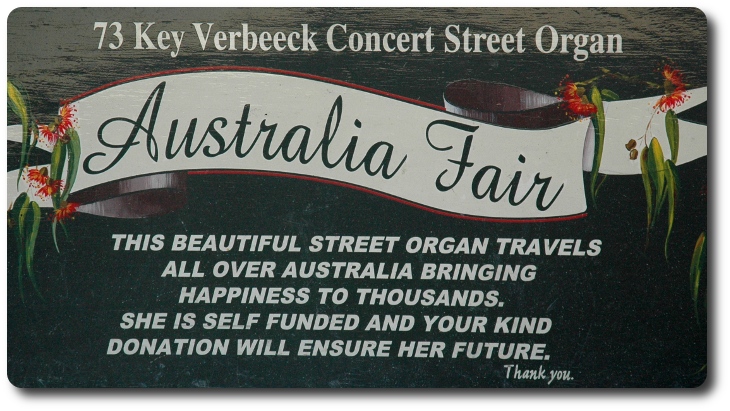

While walking around I could hear pipe organ music! Eventually the source appeared The caption gives you some details. Now for a few photos of the organ, and its operator. Sadly, I didn't bring my other (video) camera with me; it would have recorded the music of this organ, as well as the action at the rear.
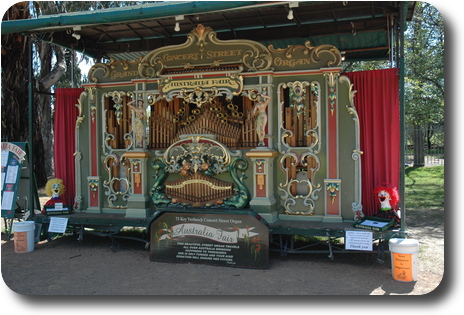 The full organ - a 73 key extravaganza!
The full organ - a 73 key extravaganza!
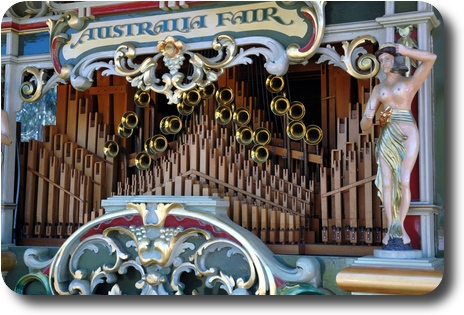 The main guts of the organ part. There are 442 pipes, and a 24 note
glockenspiel, which I am guessing are the horns among the pipes.
The main guts of the organ part. There are 442 pipes, and a 24 note
glockenspiel, which I am guessing are the horns among the pipes.
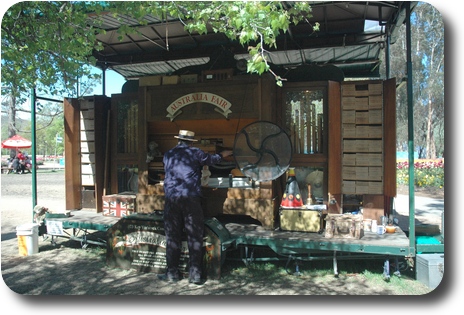 The worknig end. The white areas on the edges stire the music cards
which control the mechanism to play tunes. The operator selects one
and places it in the reader, which is what he appears to be doing
in this photo.
The worknig end. The white areas on the edges stire the music cards
which control the mechanism to play tunes. The operator selects one
and places it in the reader, which is what he appears to be doing
in this photo.
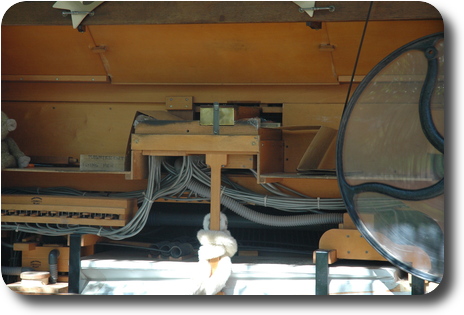 The music card reader. The stack on the left is the input, which is
fed through the reader on top (where the gray tubes originate) and is
pushed out to the right where it folds up.
The music card reader. The stack on the left is the input, which is
fed through the reader on top (where the gray tubes originate) and is
pushed out to the right where it folds up.
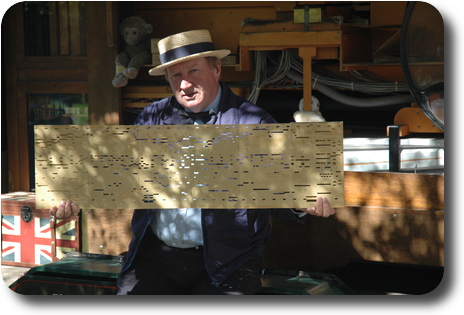 One of the music cards for this machine. Those old enough to remember
a pianola (or player piano) will recognise this as being quite similar.
One of the music cards for this machine. Those old enough to remember
a pianola (or player piano) will recognise this as being quite similar.
Australia Fair's roots lie in Europe where these large and beautiful instruments were developed in the 19th century. They are known as Dutch street organs because The Netherlands is where these instruments were most successful and they are still in use today. The historic street organ works Verbeeck Orgelfabriek survives to this day and Australia Fair, built by them in 1992, is a direct link with history.
| 73 Key Verbeeck Concert Street Organ | |
| Builder | Verbeeck Orgelfabriek, Antwerp, Belgium |
| Date | 1992 |
| Dimensions | 4m high x 6m wide x 2.5m deep |
| Weight | 2.5 tonnes |
| Instrumentation | 442 pipes, 24 note glockenspiel, snare drum, cymbal, wood block, bass drum |
| Ranks | |
| Melody | Violin, Bourdon Flute, Harmonic Flute, Undermaris, Trumpet, Mixture, Glockenspiel |
| Counter Melody | Celeste, Cello, Bass Cello, Baritine |
| Accompaniment | Bourdon Flute, Violin, Cello |
| Bass | 16' Bass, 8' Bassm 8' Violone, 16' Trombone |
There is no web site for this organ, however the operator can be reached at:-